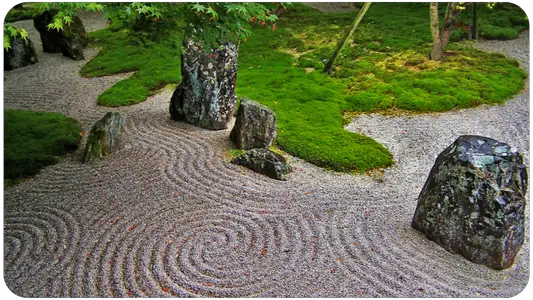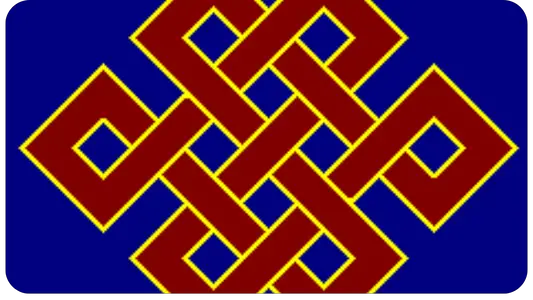Amitābha, Amitāyus or even Amida, in Japanese 阿弥陀, is a Buddha of Mahayana and Vajrayana Buddhism. He rules over the "Western Pure Land of Bliss" (Sanskrit: Sukhāvatī, Chinese: Xīfāng jílè shìjiè, ja.: saihō goraku sekai 西方極樂世界), a wonderful, pure, perfect world free from evil and suffering.
This pure land, a place of refuge from the cycle of transmigrations - equivalent to nirvāņa according to some conceptions - is central to the beliefs and practices of the Pure Land schools.
This Buddha, who is also called the Buddha of Buddhas, is very popular among Mahāyānists, especially in the Chinese world, Korea, Japan, Tibet, Laos, Cambodia, and Vietnam.
In statuary, Amitābha is depicted as Shakyamuni Buddha, but with the gestures (mudrā) of meditation or transmission of the law.
Name
This Buddha, due to the popularity of his worship is known by many names.
In Sanskrit, he has two Sanskrit names: Amitābha (Sanskrit: अमिताभ), literally "Light-Infinite " and Amitāyus (Sanskrit: अमितायुस्) "Life-Infinite" (from amita: infinite, unmeasured, undetermined; and āyus: life, long life).
In China, Japan, Korea, and Vietnam, it is known by the Chinese names from the sutras about it. The name Amida is a Sino-Japanese abbreviation of his two Sanskrit names.
The first part of each of his two Sanskrit names is phonetically transcribed, with the addition of the character for Buddha - either "Amit Buddha" or also Amida,.
Origin
Amitābha, as well as the notion of his Buddha land and his sutras-Great Sūtra of Life-Infinity, ch. and the Sūtra of Amida-were introduced into China between 150 and 200 by the Parthian monk An Shigao and others such as Zhu Shuofo (竺朔佛). The Kushan monk Lokakshema translated them into Chinese.
Amitābha is unknown in early Buddhism, and his cult may be thought to have developed in the early common era.
Dating
In 1977, the base of a Buddha statue was found in Govind-Nagar, near present-day Matthura (India), bearing an inscription dedicated to "Blessed Buddha Amitabha" and dated to the 26th year of the reign of Huvishka (king of the Kushan Empire), which, according to researchers, corresponds to the year 104 AD.
This is the first document we have on this Buddha, and moreover, one of the earliest, if not the earliest, dated testimonies of Great Vehicle Buddhism.
His name (Light-Infinity), his geographical origin, and the notion of his paradise have led to suggestions of a Persian influence, but without any proof.
The Pure Land school traces its existence in China to the beginning of the fifth century, with the formation by the monk Huiyuan in 402 on Mount Lushan of the first community, whose followers adopted the visualization of Amitābha as part of their meditation practices and aspired to be reborn in the pure land of the Buddha in order to continue their spiritual development free from the troubles of the world.
The movement took off with Tánluán (476-542), then Dàochuò (562-645) and Shàndǎo (613-681), who systematized the doctrine. At the end of the eleventh century, the Jodo Shu school ("school of the pure Land") was established in Japan by the monk Hōnen (1133-1212), and the Jōdo-Shinshū school ("true school of the pure Land"), by his disciple Shinran (1173-1262).
Amitābha in the vajrayāna
In Tibet
The instructions on the practice of Amitābha Buddha were introduced to Tibet in the seventh century by the Indian master Padmasambhava. This practice was rediscovered by Mingyur Dorje (1645-1667), one of the twenty-one principal tertöns.
The vajrayana makes it one of the components of Buddha nature, either in addition to Akshobhya Buddha alone or associated with four other wisdom buddhas or buddhas of five directions (ch. Wǔfāngfó 五方佛): Vairocana in the center, Akshobhya in the east, Ratnasambhava in the south and Amoghasiddhi in the north.
Among the Tibetan mantras associated with it, there is a long Om Ama Rani Dzi Ouèn Ti Yé Soha and a short Om ami dhewa hri.
Tsepame (Tibetan: ཚེ་དཔག་མེད, Wylie: tshe dpag med) is considered the Sambhogakāya form of Amitabha. He is depicted with the color red and in a meditative position, holding a vase containing amrita, the nectar of immortality that confers longevity, in his hands, and an ashoka (analgesic) tree grows from the vase.
The vajrayana incorporated him into the esoteric elaboration of the five wisdom buddhas, (dhyani buddhas or jinas), along with Vairocana, Akşobhya, Ratnasambhava, and Amoghasiddhi. He can be seen on the so-called "Diamond Land" mandalas representing them opposite Akşobhya (sometimes Ratnaketu).
He is associated with the West and his color is usually red, the color of the setting sun, compassion, loving-kindness and emotional power. He is the most accessible Buddha.
Another elaboration focuses on the pair Amitābha / Akshobhya, representing compassion and impassivity respectively, two complementary elements. Akşobhya rules over the eastern paradise (Abhirati) of the Diamond Land.
Amitābha is often found in his adorned form, Amitāyus, or in union with his paradem Pandara, as well as in the company of Avalokiteśvara. His effigy is very often found in the headdress of the latter, who is considered the head of the lineage.
He is also called Lokanātha ("lord of the world") or Padmapaņi ("who has a lotus in his hand").
The Panchen Lama, one of the main masters, after the Dalai Lama, of the Gelugpa school of Tibetan Buddhism, is considered to be one of Amitābha's emanations.
In Japan
In Japan, he is found in esoteric Shingon Buddhism where he belongs to the cycle of the thirteen Buddhas and as such is invoked by his dharani or short mantra Om amrita teja hara hum two years after a death. Mantra in Japanese: Om Amirita teisei kara un (Sanskrit: oṃ amṛta teje hara hūṃ. Amrita = immortal, teje = light, hara = bring. In Tibetan: ཨོཾ་ཨ་མྲྀ་ཏ་ཏེ་ཛེ་ཧ་ར་ཧཱུྃ།.
The Pure Land of the West
Amitābha is considered the creator of the Western Pure Land of Bliss (Sukhāvatī) described in the Sūtra of the Life-Infinite Contemplations; the two great bodhisattvas Avalokiteśvara and Mahasthamaprapta (Mahāsthāmaprāpta) are his two assistants (the latter is replaced by Vajrapani in some traditions such as Tibetan Buddhism) : they help him to welcome into his Pure Land all those from all directions who have fulfilled the conditions to get there.
This is why they are called "the three Saints of the West" (Chinese: Xīfāng sānshèng 西方三聖). In Pure Land monasteries or on effigies, they are shown together with Amitābha in the middle and Avalokiteśvara on his right (i.e., our left) and Mahāsthāmaprāpta (or Vajrapani) on his left (i.e., our right).
In popular Buddhism and Chinese religion, Amitābha (Amituofo) and Avalokiteśvara (Guanyin) often have the same function: they both promised not to enter nirvana until all beings are there.
Having faith in this, willing it, and constantly reciting the names of these buddhas are the three conditions necessary to enter this realm of infinite happiness.
Legend of Amitābha Buddha
Recitation of Amitābha's name (ch: niànfó 念佛; jp: nenbutsu) (literally: recollection of the Buddha) is a fundamental practice of the Pure Land schools, of which this Buddha is the main worshipper. Some branches even consider that this exercise alone is sufficient to give access to the Pure Land of Amitābha.
This invocation is :
sk: Nāmo Amitabueddhāya,
ch: Námó Ēmítuó fó, 南無阿弥陀佛 ;
jp: Namu Amida butsu 南無阿弥陀仏 ;
ko: namu Amita-bul 나무아미타불
vi: Nam mô A Di Đà Phật 阿彌陀佛;
Apart from even the Pure Land practice, these invocations are graced with spiritual and protective power. Thus, the simplified Chinese (Amituofo) and Vietnamese (A Di Đà Phật) forms, serve as a greeting formula for monks or devout devotees when they meet, especially at the pagoda on ceremonial days;
similarly, it is sometimes used by the Eastern masses of people to express shock or strong emotion (in the same way that Christians exclaim "My god!").
Rebirth Mantra
In order to be reborn in the Western Pure Land of Bliss, apart from the invocation to Amitābha, one often recites the following mantra of this Buddha: Namo Amitābhāya Tathāgatāya. Tadyathā, om, amritodbhave, amrita siddham bhave, amrita vikrānte, amrita vikrānta, gamini gagana kīrti-karī svāhā.
Temples of the Pure Land
Temple of Amitābha in Nepal.
Namsa dabisda amitabha in India
Amitabha Temple of the Pure Land (near Limoges)





